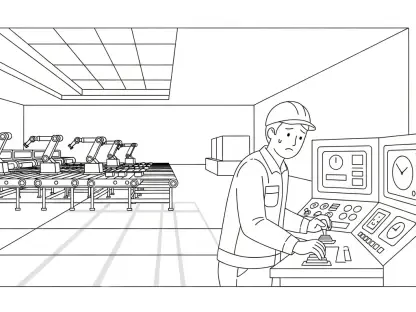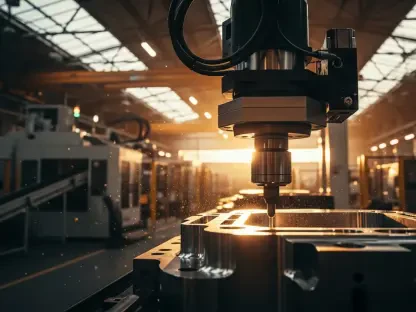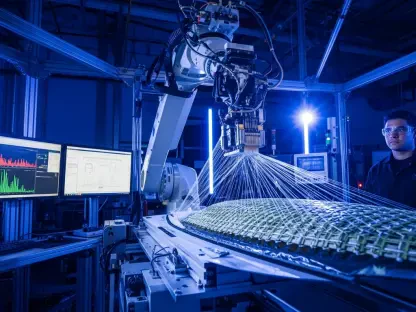I’m thrilled to sit down with Kwame Zaire, a renowned manufacturing expert with a deep passion for electronics, equipment, and production management. With his thought leadership in predictive maintenance, quality, and safety, Kwame brings a wealth of insight into the evolving landscape of pharmaceutical manufacturing and contract development and manufacturing organizations (CDMOs). Today, we’ll explore the latest trends in the industry, from navigating geopolitical challenges to capitalizing on high-demand segments like biologics, as well as the strategic moves shaping the future of this dynamic sector.
How would you assess the overall performance of a leading CDMO in the third quarter of 2025, given the current global uncertainties?
I’d say the performance of top CDMOs in Q3 2025 has been quite impressive, especially when you consider the geopolitical and economic headwinds. From what I’ve observed, their success comes down to a strong focus on high-demand areas like biologics and advanced synthesis. These segments are seeing robust growth, driven by the need for innovative therapies. Additionally, their ability to maintain operational excellence and adapt to customer needs, even in uncertain times, has been key. It’s a testament to strategic planning and resilience in the face of complex challenges.
What do you think are the key factors enabling CDMOs to thrive despite geopolitical and economic turbulence?
There are a few critical elements at play here. First, diversification of manufacturing footprints globally helps mitigate risks tied to regional instability or policy shifts. Having a strong presence in key markets like the U.S. allows CDMOs to support clients without getting bogged down by trade disruptions. Second, there’s a laser focus on innovation—whether it’s scaling up large-scale mammalian assets or advancing bioconjugates, they’re meeting market demands head-on. Lastly, operational agility ensures they can pivot quickly, maintaining supply chain stability even when the unexpected hits.
How can a global manufacturing presence help CDMOs manage risks associated with trade policies or geopolitical shifts?
A global manufacturing presence is like a safety net. When you’ve got facilities spread across regions, especially in strategic locations like the U.S., you’re less vulnerable to sudden policy changes or tariffs in one area. It allows CDMOs to reroute production or prioritize certain sites to meet client needs without major disruptions. Plus, being close to key markets reduces logistical hurdles and builds trust with customers who are increasingly focused on onshoring or regionalizing their supply chains. It’s all about flexibility and reducing dependency on any single location.
What’s fueling the strong demand for large-scale mammalian assets in the CDMO space right now?
The demand for large-scale mammalian assets is being driven by the explosion of biologics in the therapeutic pipeline. These assets are crucial for producing complex proteins and monoclonal antibodies, which are at the heart of many cutting-edge treatments for cancer, autoimmune diseases, and more. As biopharma companies scale up from clinical to commercial production, they need partners with the capacity and expertise to handle these sophisticated processes. It’s a high-growth area because the science is advancing so rapidly, and CDMOs with this capability are in a prime position to capitalize.
Can you dive into the trends you’re seeing in commercial demand for bioconjugates and small molecules in advanced synthesis?
Absolutely. Bioconjugates, especially antibody-drug conjugates (ADCs), are seeing a surge in demand due to their targeted approach in treating diseases like cancer. They combine the precision of antibodies with the potency of small molecules, and the market is hungry for partners who can handle the complex chemistry and manufacturing involved. As for small molecules, there’s steady demand in advanced synthesis for niche, high-potency compounds. These often require specialized facilities and expertise, which CDMOs are uniquely equipped to provide. Both areas reflect a broader trend toward personalized and precision medicine.
How do you see the role of strategic acquisitions, like major facility purchases, in shaping a CDMO’s growth trajectory?
Strategic acquisitions are game-changers for CDMOs. Take, for instance, the acquisition of large biologics facilities—it instantly boosts capacity in high-demand areas like mammalian drug substance production. These moves not only expand operational scale but also bring in new customer agreements and long-term contracts. They position CDMOs to meet market needs faster than building from scratch would allow. However, the real magic happens in integration—ensuring the new site aligns with global standards for quality and efficiency. When done right, it’s a powerful way to solidify market leadership.
What challenges and opportunities do you see in integrating a newly acquired large-scale facility into a global network?
The biggest challenge in integrating a new facility is aligning it with the existing network’s quality systems, operational protocols, and culture. There’s often a steep learning curve in harmonizing processes, especially if the site has a legacy of different practices. On the flip side, the opportunities are massive. You can leverage the facility to attract high-value contracts, especially if it’s in a strategic location like the U.S. It also allows for rapid scaling of production to meet customer demand. The key is investing in automation and upgrades early on to ensure long-term efficiency and compliance.
How are businesses like Capsules & Health Ingredients adapting to growth while navigating potential divestitures or market changes?
Businesses in the Capsules & Health Ingredients space are showing remarkable adaptability. They’re focusing on core strengths, like ramping up volumes in pharmaceutical capsules, which directly fuels growth. Even with divestiture plans on the horizon, they’re maintaining operational focus—ensuring customer needs are met without letting internal restructuring disrupt progress. A strong manufacturing base, particularly in the U.S., also helps them navigate tariff changes by offering localized solutions. It’s about balancing short-term performance with long-term strategic goals, and they’re doing it well.
What impact do you think a strong U.S. manufacturing presence has on supporting customers in a shifting tariff environment?
Having a robust U.S. manufacturing presence is a huge advantage in today’s tariff environment. It allows companies to offer localized production, which minimizes the impact of import costs or trade barriers for customers. This is especially critical for biopharma clients who are under pressure to re-shore their supply chains. It builds confidence that their manufacturing partner can deliver without delays or added expenses tied to cross-border issues. In essence, it’s a competitive edge that aligns with the broader trend of regionalization in the industry.
What is your forecast for the future of the CDMO sector, particularly in high-growth areas like biologics and advanced synthesis?
I’m very optimistic about the CDMO sector, especially in biologics and advanced synthesis. The demand for biologics isn’t slowing down—think monoclonal antibodies, gene therapies, and cell-based treatments. CDMOs that can scale up mammalian production and maintain quality will continue to see strong growth. Advanced synthesis, particularly for bioconjugates like ADCs, will also be a hot area as personalized medicine gains traction. My forecast is that over the next five years, we’ll see even more investment in capacity and technology, alongside partnerships with biopharma to co-develop innovative solutions. The challenge will be staying ahead of regulatory and technological curves, but the opportunities are boundless.









